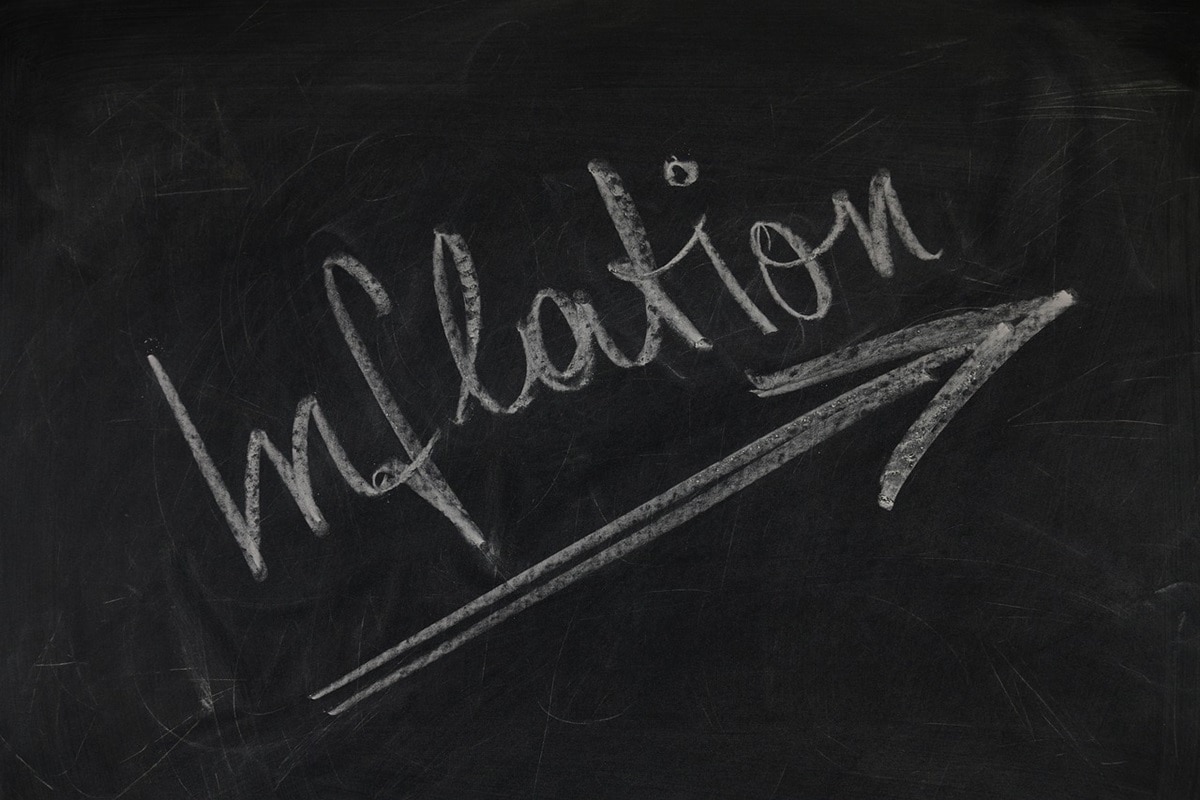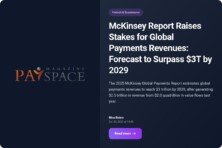In the United States, inflation remained firm last month.

The mentioned positions of the specified indicator indicate that there continue to be risks faced by Federal Reserve officials when trying to fully control price pressure.
The so-called core consumer price index (CPI) in the United States showed an increase of 0.3% in October. The appropriate information was published by the US Bureau of Labor Statistics on Wednesday, November 13. It is worth noting that the mentioned dynamic of the specified indicator has been observed for the third month in a row. The core consumer price index does not take into account food and energy costs. According to media estimates, this indicator has increased by 3.6% year-on-year over the past three months.
Many economists hold the view that the core gauge better reflects tendencies of inflation than the overall CPI. The overall CPI in the United States rose 0.2% month-on-month in October. It is worth noting that the corresponding rate of upward dynamic of this indicator is observed for the fourth month in a row. Also, the October CPI showed an increase of 2.6% compared to the figure for the same period last year. It is worth noting that in this case there is the first acceleration of the indicator on an annual basis since March.
The Bureau of Labor Statistics reported that shelter’s share accounted for more than half of the total monthly advance.
The data released on Wednesday indicate the slow and frustrating nature of the fight against inflation. In this context, it is worth noting that progress in countering large-scale price increases sometimes slows down for months on the path to a positive result that implies a much more significant decrease in the indicator. The United States’ forward movement in the fight against inflation is currently likely to face a waning momentum of a gradual approach to the goal. The reason for the corresponding dynamic is that the prices of goods begin to show growth after a year of constant decline. At the same time, the cost of housing in the United States does not show significant changes. Also, in October, a decrease in car insurance costs was recorded in the US. It is worth noting that this is the second decrease since the beginning of 2022. The corresponding dynamic means little relief for US consumers.
Data released on Wednesday, strong consumer spending and 2.8% year-on-year growth in the gross domestic product (GDP) of the United States in the third quarter of 2024 signal that US central bank officials should exercise caution in the context of their approach to cutting interest rates in the coming months. The country’s labor market is currently experiencing a state of affairs that can be described as cooling. Progress in the fight against inflation has become the main argument for the central bank of the United States in favor of deciding on cutting interest rates. It is worth noting that this progress is what can be called an obvious fact that contains no reason for doubt. In June 2022, inflation in the United States was fixed at 9.1%. Since then, this indicator has been on a downward trajectory.
Wells Fargo & Co. economists Sarah House and Michael Pugliese said in a note that inflation data over the past few months has not shown significant progress, and the results of the US presidential election in November have raised new questions about the path ahead for price growth. According to these experts, the moment is fast approaching when the Federal Open Market Committee (FOMC) will signal a further slowdown in the pace of cutting interest rates, perhaps to an every-other-meeting pace starting in 2025. It is worth noting that the mentioned committee sets monetary policy.
Also, the central bank of the United States will soon face a new set of policies under President-elect Donald Trump. Currently, many companies are considering the possibility of raising prices in anticipation of the implementation of Mr. Trump’s repeatedly stated intention in the past to increase tariffs on imported goods.
Last week, the central bank of the United States decided to lower the cost of borrowing by a quarter percentage point to a target range of 4.5%-4.75%. After that, Fed chairman Jerome Powell said that the elections would not be a factor impacting the decisions of the US financial regulator in the near term. He also noted that it is too early to know the timing or substance of any potential fiscal policy changes.
Minneapolis Fed President Neel Kashkari stated that based on the headline numbers, he is confident that inflation is moving in the right direction. In this case, it implies a gradual progress towards the Fed’s target of 2% regarding the mentioned indicator. Neel Kashkari made the corresponding statement during a conversation with media representatives. According to him, the Fed has another month or six weeks to analyze inflation data before deciding in the context of monetary policy.
The S&P 500 opened higher. At the same time, Treasury yields showed a decline. Currently, traders estimate at about 70% probability that next month the central bank of the United States will make another decision on cutting interest rates. It should be noted that before the inflation data were published on Wednesday, the mentioned indicator was around 60%.
Prices for used cars in the United States in October rose by 2.7%. It is worth noting that in this case, the maximum rate of upward dynamic in more than a year was recorded. Hotel rates in the United States in October rose by 0.4%. The dynamic of this indicator may be a reflection of the damage and evacuation orders associated with hurricanes Helene and Milton. The cost of health insurance in the United States in October showed an increase of 0.5%.
At the same time, US apparel prices fell last month with a degree of intensity that was the highest since the coronavirus pandemic began. This indicator declined by 1.5%.
Shelter prices, the largest category within services, rose by 0.4% in the United States in October. The rate of upward dynamic of this indicator accelerated compared to the previous month. Owners’ equivalent rent increased by the same amount. This indicator is a subset of shelter and the largest individual component of the CPI.
According to media calculations, service prices in the United States, excluding the corresponding figures in the areas of housing and energy, increased by 0.3% in October. In this case, there is a slowdown in the growth of the indicator compared to the September reading. It is worth noting that central banks around the world take into account the service prices when making decisions related to the monetary policy strategy.
The measure known as the personal consumption expenditures price index doesn’t put as much weight on shelter as the CPI does. This circumstance is one of the reasons that inflation in the United States is currently on a trajectory of gradual movement towards the Fed’s target.
Goods prices excluding food and energy, meanwhile, show an upward dynamic for the second month in a row. It is worth noting that for most of last year, the corresponding indicators were on a downward trajectory.
Experts Anna Wong and Stuart Paul said that outside of cars, however, goods disinflation remains broad-based. They also noted that currently there are no signs that the front running of business activity against the background of a high probability of new tariffs has provoked an inflation boost. According to them, the October CPI report does not contain information that could be an argument against the FOMC’s decision to cut interest rates again in December.
Currently, the United States policymakers also paying close attention to wage growth. It is worth noting that the dynamic of this indicator will help shape expectations regarding the volume of consumer spending, which is the main driving force of the US economy. On Wednesday, a separate report was published, which combined data on inflation and wages. This report contains information according to which the real earnings of residents of the United States in October increased by 1.4% year-on-year. It should be noted that in September this indicator showed the same dynamic.
For many residents of the United States in recent years, the wage growth rate has been below the rate of inflation. Some experts referred to by the media claim that the negative assessment of the reality in the US economic system space was one of the factors that contributed to Donald Trump’s victory in the presidential election. According to one of the exit polls, 45% of residents of the United States said that under the administration of the current President Joe Biden, their financial situation has worsened. It should be noted that this indicator is a record. For example, during the financial crisis of 2008, such high figures were not observed.
Also, currently, in the United States, some measures of inflation expectations remain somewhat elevated, both among consumers and businesses. This indicator has the potential to be a wake-up call after several years of robust price pressures.
Over the past two years, inflation in the United States has exhibited what can be symbolically characterized as a sudden burst of flame, setting a kind of damage-carrying conflagration in the economy. However, the US did not plunge into a deep and insurmountable crisis that canceled out any even minimally positive prospect. Also, in this context, it is worth mentioning that Washington has made significant progress in its efforts to counter price increases. However, the fact that the state of affairs is not categorically critical or totally pessimistic does not mean that the finances of the residents of the United States have not been scathed. It is also obvious that this situation has had a negative impact on the economic sentiment of citizens, including in the context of perception of the prospects for the future. It is worth noting that the corresponding assessment of the state of affairs is also reflected in social sentiments.
In recent years, rising inflation has not been a regional specificity that is unique to the United States. The upward dynamic of prices is what can be characterized as a global situation in the context of the current configuration of the world economic reality. It is worth noting that widespread inflation spreading across multiple countries is the result of a combination of different circumstances. In this context, it is worth mentioning the disruption of international supply chains during the coronavirus pandemic, which was a kind of shock factor for the global economy. Also, in recent years, changes in tendencies of demand have been recorded at the international level. Besides, it is worth mentioning the fiscal stimulus from the Joe Biden and Donald Trump administrations.
Regarding the results of the United States presidential election that ended last week from an economic perspective, it is worth noting that Mr. Trump, who won, promised to fight high prices. In this context, it is indicative that US residents, who voted for him in the majority, demonstrated their tiredness of the current economic state of affairs and demonstrated the opinion that the present situation should be improved.
At the same time, as noted by the media with reference to experts, a large-scale price lowering, implemented in the shortest possible time and characterized by a high level of intensity, is a prospect with virtually zero realism and at the same time contains the risk of a recurrence of inflation. It is worth noting that the resumption of a rapid inflationary process is gradually becoming a kind of shadow of the immediate past, the repetition of which is a highly undesirable scenario for the United States as an economic system and social space.
Economist Larry Summers said on Wednesday, during a conversation with the media, that if Donald Trump carries his promises declared during the election campaign, the US will face an inflationary shock that will be much stronger compared to the configuration of the corresponding situation observed in 2021.
Inflation risks also include Mr. Trump’s announced plans to raise tariffs and conduct mass deportations. It is worth clarifying that in this case near-term risks are implied. Instability in the Middle East may also have a potential negative impact on the state of affairs in the US economy. The situation in this region contains risks of scaling up the armed conflict. The potential implementation of a negative scenario in the Middle East will affect world oil prices, which will have a sensitive impact on the condition of the economic system in the United States.
Returning to the topic of possible mass deportations of undocumented immigrants, which Donald Trump stated his intention to commit, it is worth noting that, according to economists who spoke with journalists, in this case, there is a risk of shrinking of labor supply. Businesses will also face rising costs, which will eventually become a burden for consumers. The realization of the relevant perspective will worsen the financial well-being of residents of the United States. Then this economic reality will be reflected in social sentiments. At the same time, in the appropriate context, a probability is implied, which has not yet become a fact that objectively exists in the practical plane.
It is also worth paying special attention to the problem of uncertainty. This circumstance is typical for the global economy. The United States in the relevant context is not a space that is not covered by the mentioned problem. Currently, many economies are gradually showing recovery and revival. However, the continuation of the implementation of the relevant tendencies does not fall into the category of guaranteed or maximum probable scenarios. The potential obstacle in this case is precisely uncertainty. To a large extent, the corresponding situation is related to the growth of geopolitical tensions. Relations between many world capitals are on a trajectory of consistent deterioration and generate the risk of crossing the line beyond which the fundamental degradation of the international partnership system will begin. For the economy both on a global scale and at the regional level, the corresponding prospects are unequivocally negative.
At the same time, the current risks do not negate that the picture of disinflation in the US remains generally positive.
Lindsay Rosner, head of multi-sector fixed-income investing at Goldman Sachs Asset Management, said that underlying inflation is holding the line and does not show acceleration, which forms the conditions for the decision by the central bank of the United States to continue cutting interest rates in December. In the relevant context, it is worth noting that the US financial regulator has repeatedly stated its data-based approach. This means that officials of the central bank of the United States make decisions related to monetary policy, focusing on information about the situation in the economic space relevant at the time of their respective meetings. The Fed does not have a pre-formed action plan for changes in interest rates. This approach is common among central banks around the world.









